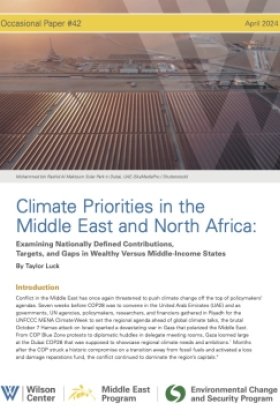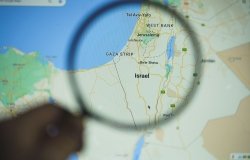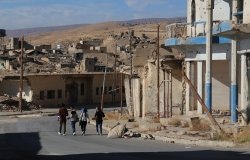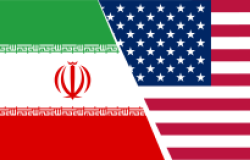Palestine-Israel Peace Unlikely Agenda Item
Election-year politics, post-Arab Spring uncertainty, and the Fatah-Hamas rift are standing in the way of a possible two-state solution—while Iran’s nuclear program remains in dominant focus.
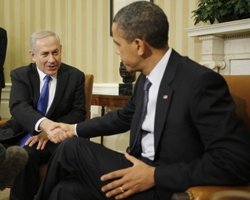
President Obama and Israeli Prime Minister Benjamin Netanyahu will devote little time Monday to the Israeli-Palestinian conflict, in part because of Iran and election-year politics. But the principal cause is this: A negotiated, two-state solution is running harder than ever against intractable political and psychological realities in Israel, Palestine and the Arab world. These are pushing toward a de facto outcome that will not be negotiated, comprehensive or conflict-ending.
Even assuming Netanyahu is prepared to embrace a two-state solution acceptable to Palestinians, he would have to take on powerful settler and right-wing constituencies at a time when regional tumult and Iran’s nuclear progress exacerbate national feelings of insecurity. Netanyahu’s assertion that the Palestinian split and instability in the Arab world counsel against risky moves might be a convenient excuse to do nothing — but that doesn’t necessarily make it wrong. And he is unlikely to jeopardize his political future or his country’s security chasing a solution that, to his mind, does both.
Among Palestinians, the brewing crisis over President Mahmoud Abbas’s potential succession, popular disenchantment with the peace process and the appeal of internationalizing the conflict mean there are few political incentives for flexibility toward Israel. Divisions between the Fatah and Hamas factions complicate matters: Their recent agreement is paper-thin and highlights that, for now, Palestinians are focused more on immediate politics than on their longer-term fate.
Then there are regional developments: Abbas can no longer rely on influential Arab cover for controversial compromises. The Islamist wave is a reliable indicator of where popular Arab sentiment resides; it probably will not translate into imminent hostility toward Israel but, at a minimum, excludes a forthcoming approach.
Conditions will not remain static. Over time, the political landscape is likely to be carved by local actors’ concerns. Reports of Israel’s isolation may be exaggerated, but international ill will is mounting. Israelis recognize that if Palestinians remain under occupation for much longer, they may drop their call for independent statehood and demand equal rights in a single, binational (i.e., no longer Jewish) state. Israel has a potential answer: a withdrawal from the most populated areas of the West Bank, preserving the bulk of settlements and overall Israeli dominion and sparing the country a wrenching internal conflict. The idea is not new: Mooted in Gaza in 2005, its planned extension to the West Bank was halted when Palestinians’ acquisition of weapons through a porous border with Egypt soured Israelis’ mood. Sooner or later, the plan could be revived, coupled with an Israeli military presence in the Jordan Valley to minimize risks of a Gazan repeat.
Fatah and the Ramallah-based Palestinian Authority have a long-term objective that differs markedly from Israel’s: a state enjoying full sovereign rights on virtually all the land occupied in 1967. But many among them are working toward goals that are closer at hand: building institutions of a putative state, governing their people and lessening Israel’s footprint. They are unlikely to agree with Jerusalem over the scope of its withdrawal, which almost certainly makes negotiations futile. For now, a unilateral Israeli decision could suit both sides.
A greater chasm separates Hamas’s and Israel’s ideas for a permanent solution. Paradoxically, this means they could be inclined to settle for a long-term de facto understanding — what the Islamist movement calls a truce and Israel calls an interim arrangement. Here, too, their perspectives collide, as Hamas’s conception of a truce entails a full withdrawal from the West Bank and the right of return for Palestinian refugees, steps Israel will adamantly reject in a permanent or temporary agreement. Still, an Israeli pullout from parts of the West Bank, coupled with a mutual cease-fire but without any interaction with or recognition of the Jewish state, is something Hamas would welcome as a victory without endorsing as a deal.
Such an outcome would promote the protagonists’ short-term interests. Israel would mollify Western critics and neutralize the Palestinian demographic threat; Fatah could continue building institutions of a future state; Hamas again may claim credit for pushing Israel back without compromising on core principles. But the conflict would endure. Israel would not achieve Arab recognition or an end to Palestinian claims; Fatah would not have produced a sovereign, independent state or resolved the refugee issue; and Hamas would have to acquiesce in the continued presence of a Jewish state on what it considers Palestinian land. The ultimate reckoning would still loom, arguably under conditions more inimical to the comprehensive resolution all claim to seek.
Since the inception of the Israeli-Palestinian conflict, the status of the land between the Jordan River and Mediterranean Sea has been determined almost invariably by acts of war or unilateral decisions. Even the Oslo Accords altered the status of Palestinian territory little on the ground. Someday this may change. For now, events outside the negotiating room again deserve far more consideration than what’s happening inside — and could shape Israeli-Palestinian relations for some time to come.
This article originally appeared in The Washington Post.



